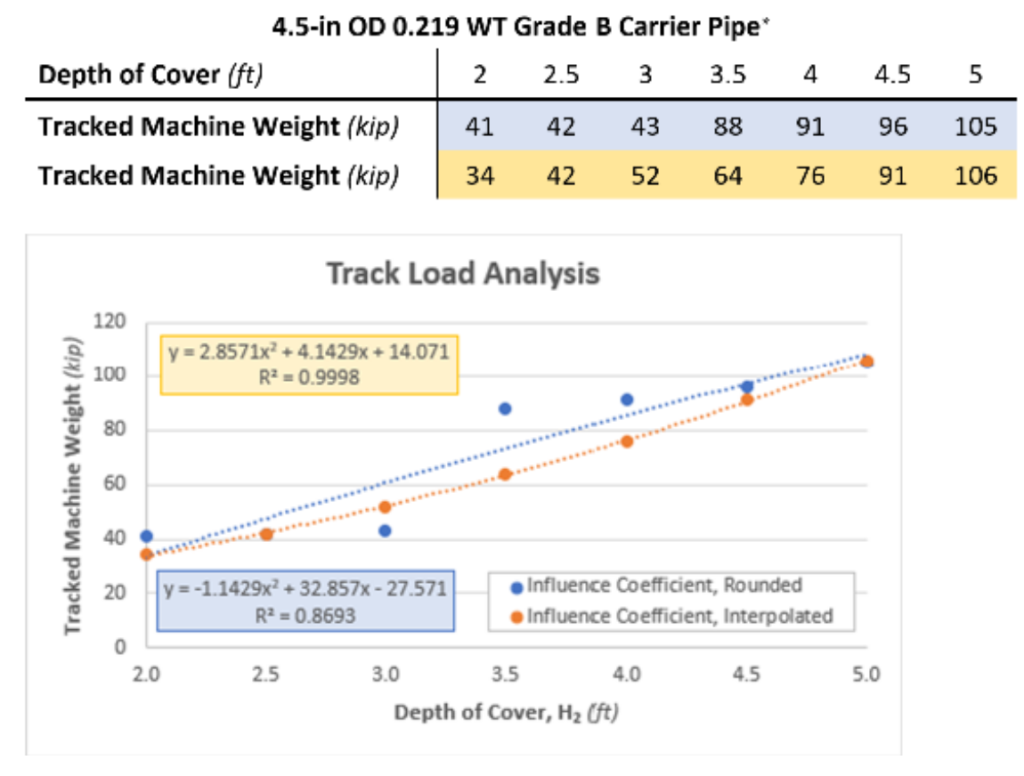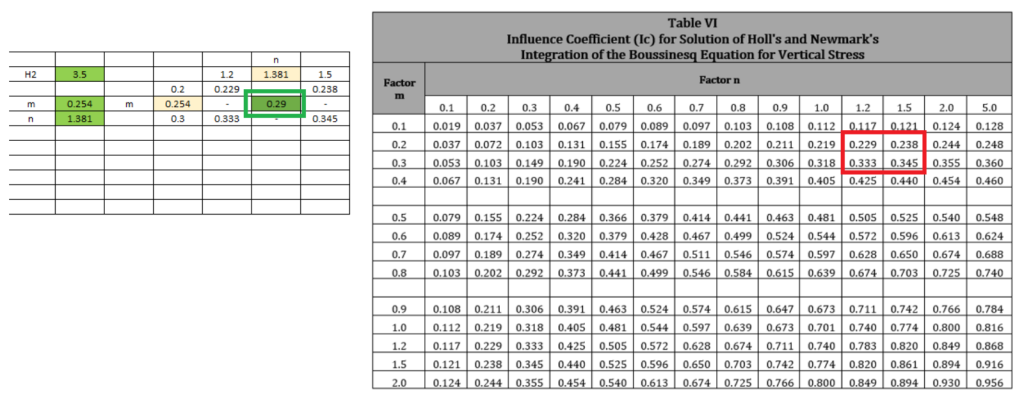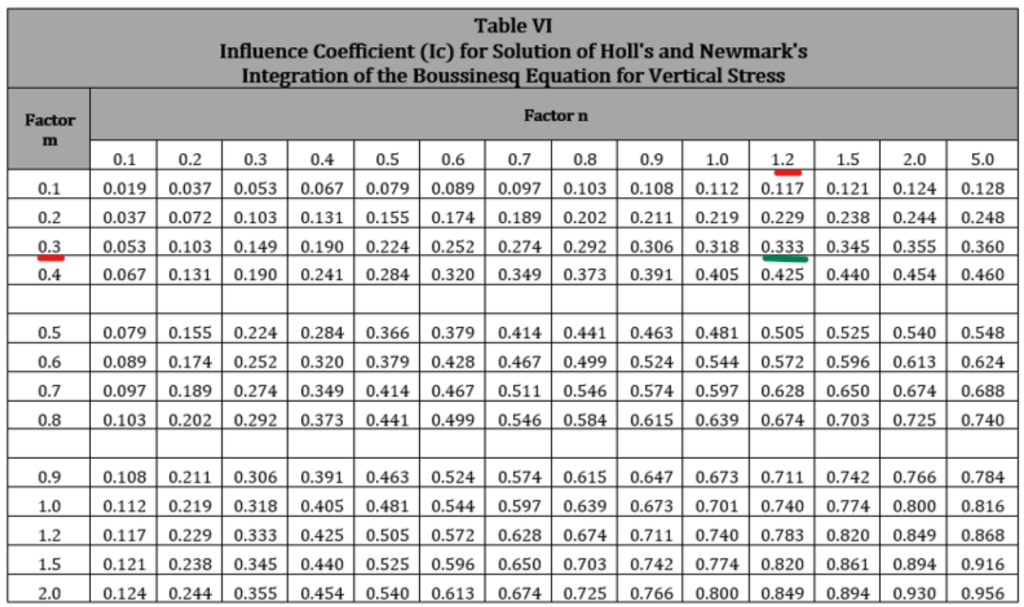We recently issued an enhancement for Track load calculation by providing an option to use the Interpolation Method to calculate the Influence Coefficient (Ic). The old method calculated the Influence Coefficient using a roundoff method for ‘m-Influence Factor’ and ‘n-Influence Factor’ to get the Influence Coefficient from the table.
Following the round off method has its limitation that is clearly visible when the ‘Vertical Depth of the Soil Cover’ is below 5 ft as shown in the comparison plot below

In the below section we will explain more on the process workflow for both methods –
- Interpolation Method
- In the interpolation method, for the Influence Coefficient calculation the first step is to calculate the ‘m-Influence Factor’ and ‘n-Influence Factor’. In this case the value is 0.254 and 1.381 respectively
- Next step is locating the data range in the table for ‘m’ and ‘n’. This can be seen in the highlighted section (red) in the table.
- Once the range is identified, the table ranges for ‘n’ and ‘m’ will be utilized to interpolate the exact value of Influence Coefficient. In this case the Ic value interpolated comes up to 0.29.

- Standard Roundoff Method
- In the round off method, the first step is to calculate the ‘m-Influence Factor’ and ‘n-Influence Factor. In this case the value is 0.254 and 1.381 respectively.
- Now the ‘m’ and ‘n’ factors are rounded off to 1 dec digit. So the values in our case for ‘m’ and ‘n’ will be 0.3 and 1.4.
- This falls under the range of n=1.2/ n>1.2&&n<1.5 and m = 0.3
- The corresponding Influence Coefficient in this case is 0.333

